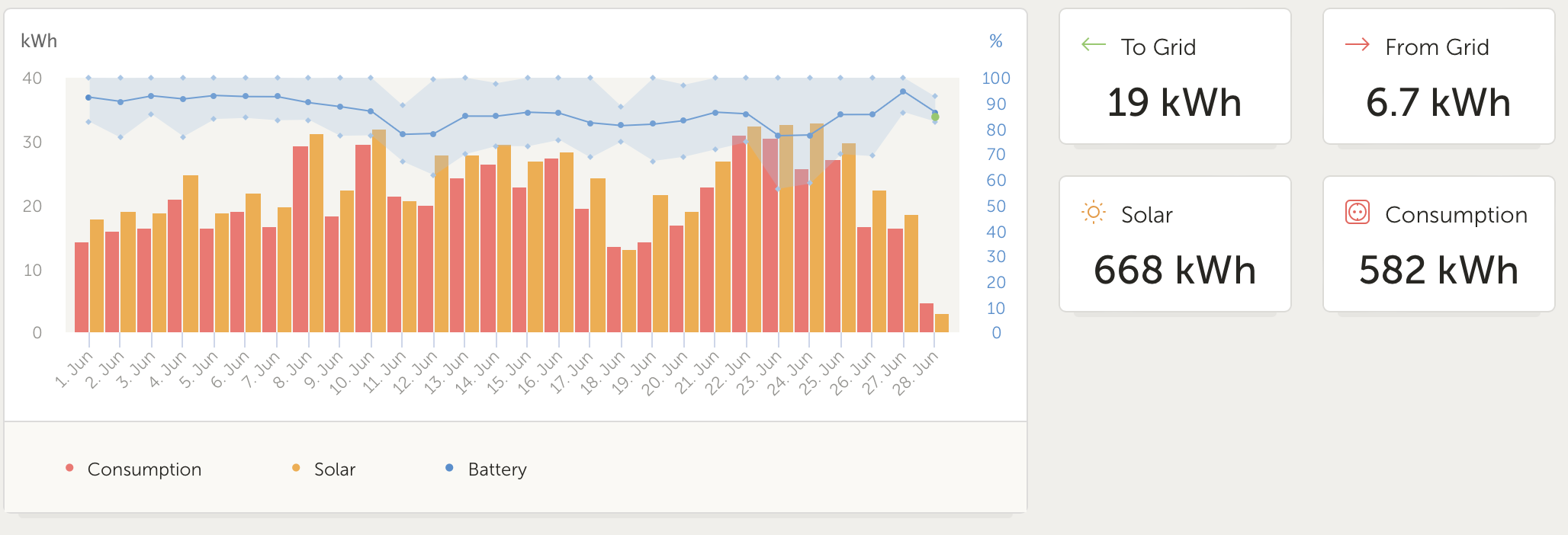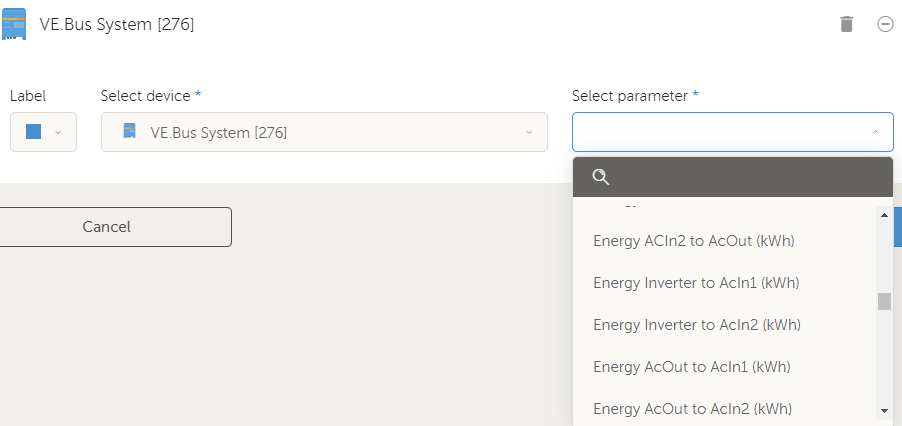Good Day! I set up my ESS roughly 1 1/2 months ago. It looks like this:
1 MultiPlus-II 48/5000/70-50
1 SmartSolar MPPT RS 450-100 with roughly 4kwp connected to one of its MPPTs
1 Pylontech US5000.
I did not opt for a shunt or any additional battery monitor. No AC-coupled PV. MP2 is connected via AC-In only. Everything is working fine so far, in the last 30 days I consumed 476 kWh, from which only 31 were bought from the grid. Now I was curious about the efficiency of the whole system, especially when it comes to the battery. Now, the Pylontech BMS does not seem to offer any history (charged/discharged kWh), so I have to take the numbers that I get from Victron.
According to the VRM, during the last 30 days 173 kWh where charged into the battery, and 110 kWh were discharged. That would equate to less then 64% efficiency, which would be very low for a DC coupled system.
Am I looking at the wrong numbers? Are those just estimates, and the real values might be very different?
Greetings
Markus













